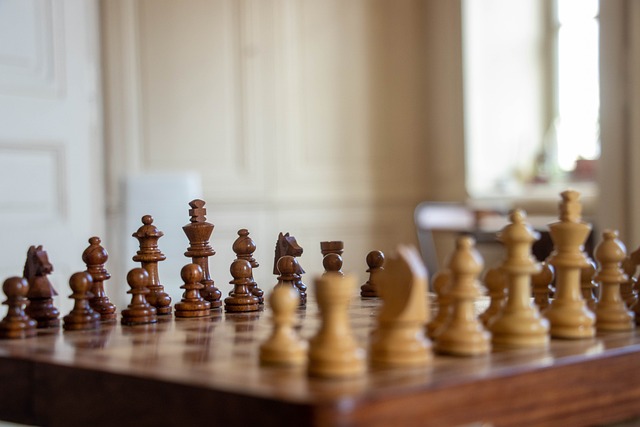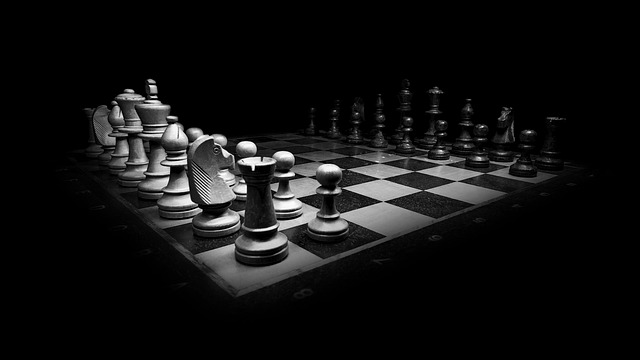Chess is a game of strategy, where every move counts, and the positioning of your pieces can make or break your success. Arranging chess pieces may seem like a simple task, but it requires careful consideration and understanding of the game.
In this comprehensive guide, we will delve into the intricacies of chess piece placement, providing you with valuable insights and tips to enhance your gameplay.
Why is Proper Chess Piece Arrangement Essential for Success?
Proper chess piece arrangement lays the foundation for strong and effective gameplay. Each piece has its unique strengths and weaknesses, and its placement on the board determines its ability to control the game.
By strategically positioning your pieces, you gain control over key squares, set up powerful attacks, and protect your own pieces from being captured.
To illustrate, consider the importance of the opening moves. A well-arranged chessboard can lead to a favorable position, while a careless arrangement may leave you vulnerable to early threats. By understanding the significance of piece placement, you can set yourself up for success right from the start.
Here’s a table comparing the initial placement of the chess pieces using three columns and five rows:
| Piece | White | Black |
|---|---|---|
| Pawn | 2nd | 7th |
| Knight | b1, g1 | b8, g8 |
| Bishop | c1, f1 | c8, f8 |
| Rook | a1, h1 | a8, h8 |
| Queen | d1 | d8 |
| King | e1 | e8 |
This table clearly illustrates the initial placement of each chess piece, with the first column representing the piece type, the second column indicating the initial positions for White, and the third column denoting the initial positions for Black.
What are the Basic Rules of Chess Piece Placement?

Before diving into the specifics, it’s crucial to understand the basic rules of chess piece placement. The chessboard consists of 64 squares, alternating between light and dark colors.
Each player starts with 16 pieces, including pawns, knights, bishops, rooks, a queen, and a king. The pieces are placed on the board in a specific pattern during the initial setup.
The pawns occupy the second row in front of the other pieces, while the back row is reserved for the more powerful pieces. The rooks are placed in the corners, followed by the knights next to them. The bishops occupy the squares adjacent to the knights, and the queen is positioned on the remaining square of her color. The king is placed beside the queen.
How Do You Set Up the Chessboard Correctly?
Setting up the chessboard correctly is crucial to ensure a fair and balanced game. Start by placing the board so that each player has a white square in the bottom-right corner. The rooks are then placed in the corners of the board, followed by the knights next to them.
The bishops are positioned beside the knights, and the queen takes her place on the remaining square of her color. Finally, the king is placed beside the queen.
It’s important to note that the positions of the pieces may vary depending on the opening moves and strategies employed. However, the initial setup provides a solid starting point for beginners. By following these guidelines, you ensure that the board is symmetrical and both players have equal opportunities.
Which Piece Should You Move First?

A Beginner’s Dilemma Solved! The first move in chess can set the tone for the entire game. While there is no definitive answer to which piece you should move first, a common practice is to start with either a pawn or a knight.
Moving a pawn allows you to control the center of the board and open up pathways for your other pieces. On the other hand, moving a knight can establish control over the center while simultaneously developing a piece.
It’s important to consider the long-term implications of your opening move. Some players prefer pawn moves like 1.e4 or 1.d4, while others opt for knight moves like 1.Nf3 or 1.Nc3. Experimenting with different opening moves and observing their impact on the game can help you develop your own style and preferred strategies.
What Strategies Can Help Optimize Your Chess Piece Placement?
Optimizing your chess piece placement involves strategic thinking and planning. Here are some key strategies to consider:
- Control the center: The center of the board provides more control and mobility for your pieces. Position your pawns and other pieces to exert influence over the central squares.
- Coordinate your pieces: Establish coordination among your pieces to create powerful attacks and defensive structures. Develop a harmonious relationship between your pawns, knights, bishops, rooks, queens, and kings.
- Balance offense and defense: While it’s essential to launch attacks, don’t neglect the defense of your own pieces. Position your pieces in a way that protects vulnerable squares and safeguards your king.
- Exploit your opponent’s weaknesses: Analyze your opponent’s piece placement and identify any weaknesses or imbalances. Look for opportunities to exploit these weaknesses and gain an advantage.
- Adapt to the game’s progression: As the game evolves, the dynamics of the board change. Continuously reassess your piece placement and adjust your strategy accordingly.
By employing these strategies, you can optimize your chess piece placement and gain a competitive edge on the board.
Are There Different Opening Moves That Require Specific Piece Arrangements?
Yes, there are various opening moves in chess that require specific piece arrangements. The choice of opening largely depends on personal preference and style. Some popular opening moves include the King’s Pawn Opening (1.e4), the Queen’s Pawn Opening (1.d4), and the Reti Opening (1.Nf3).
Each opening move leads to different positions and piece arrangements, shaping the nature of the game. For instance, the King’s Pawn Opening often leads to more aggressive and tactical positions, while the Queen’s Pawn Opening tends to result in more strategic and positional battles.
Understanding the concepts behind different opening moves can help you anticipate your opponent’s strategies and respond effectively. It’s essential to study various opening moves, learn their corresponding piece arrangements, and practice them to expand your repertoire.
What’s the Purpose of the Pawns in the Initial Setup?

Pawns play a crucial role in the initial setup of a chess game. Placed in the second row, pawns act as the first line of defense and play a significant role in controlling the center. By advancing the pawns, you create space for your other pieces to develop and exert influence over the board.
Pawns also have unique abilities, such as capturing en passant and promoting to other pieces when reaching the eighth rank. Their initial placement should be strategic, allowing them to support other pieces and provide a strong foundation for your gameplay. It’s important to protect and advance your pawns wisely, as they can greatly influence the dynamics of the game.
How Should You Position the Knights for Optimal Influence?
The knights are versatile and powerful pieces in chess. Their unique L-shaped movement allows them to jump over other pieces, making them valuable in both offense and defense. Positioning the knights strategically enhances their influence on the board.
A common practice is to develop the knights early in the game, typically by moving them to squares where they can control the center and support the advancement of other pieces. Placing knights on squares like c3, c6, f3, or f6 allows them to exert influence over critical central squares.
Additionally, knights can work in harmony with other pieces, such as the pawns and bishops. By coordinating their movements, you can create powerful attacking combinations and control key areas of the board.
What’s the Ideal Placement for the Bishops to Maximize Their Potential?
Bishops possess significant power, capable of controlling long diagonals and attacking from a distance. Their placement on the board is crucial to maximize their potential and ensure they contribute effectively to your gameplay.
In the initial setup, bishops are placed on the squares adjacent to the knights. The light-squared bishop starts on a light-colored square, while the dark-squared bishop occupies a dark-colored square. This arrangement allows each bishop to cover a different set of diagonals, providing balanced coverage of the board.
To maximize the potential of your bishops, consider developing them to open diagonals where they can target the opponent’s pieces or pose threats to their position. Coordinate their movements with other pieces to create powerful attacks and exploit weaknesses in your opponent’s defense.
What Factors Determine the Placement of the Rooks?
Rooks are powerful pieces that thrive in open positions. Their movement along ranks and files allows them to control entire rows or columns, making them vital for creating threats and supporting other pieces.
In the initial setup, the rooks are positioned in the corners of the board. This placement ensures that they have open lines to operate and can contribute to the game from the start. However, as the game progresses, the optimal placement of the rooks depends on various factors.
Consider the centralization of your rooks, placing them on files that are likely to open up or provide tactical opportunities. Connect your rooks by moving them to the same rank or file, reinforcing their power and facilitating coordinated attacks. Additionally, evaluate the safety of your rooks, protecting them from potential threats and positioning them to defend important squares.
How to Position the Queen for Maximum Control of the Board?
The queen is the most powerful piece on the chessboard, capable of traversing both ranks and files as well as diagonals. Its versatility and range make it a formidable force in any game. Proper positioning of the queen is essential to harness its potential and exert maximum control over the board.
In the initial setup, the queen is placed on the remaining square of her color after arranging the other pieces. This central placement allows the queen to influence both wings of the board and play an active role in the game.
To optimize the positioning of your queen, consider deploying it strategically to open files or diagonals where it can target the opponent’s pieces. Simultaneously, be mindful of the queen’s vulnerability to attacks, as it can become a prime target for your opponent. Balance offense and defense, using the queen to create threats while ensuring its safety.
What Are the Key Considerations for the King’s Placement?
The king is the most important piece in chess, and its safety is paramount throughout the game. In the initial setup, the king is positioned beside the queen, typically on the e-file for White and the d-file for Black. This central placement offers some protection and allows for greater flexibility in castling.
When considering the king’s placement, safety should be your top priority. Avoid exposing the king to unnecessary risks, such as open lines or potential checks. Keep the king protected behind a solid pawn structure, ensuring it has a safe haven to retreat to if needed.
Furthermore, timing plays a crucial role in king placement. It’s common to castle early in the game to safeguard the king and connect the rooks. Castling allows the king to seek refuge behind a line of pawns, fortifying its position and increasing overall game stability.
Should You Protect the King with Pawns or Other Pieces?
Protecting the king is of utmost importance in chess, and there are multiple ways to achieve this. While pawns can form a defensive shield around the king, other pieces can also play a significant role in protecting and securing the king’s safety.
Pawns can serve as the first line of defense, forming a solid structure that shields the king from immediate threats. Advancing pawns cautiously and creating a pawn cover in front of the king can provide a protective barrier.
In addition to pawns, other pieces, such as knights and bishops, can be positioned strategically to defend the king. Placing these pieces in a way that they cover potential attacking lines or protect weak squares can enhance the king’s security.
Ultimately, finding the right balance between pawn and piece protection depends on the game situation. Adapt your defensive strategy based on the opponent’s threats and the overall position on the board.
With all this in mind,
In this comprehensive guide, we have explored the intricacies of arranging chess pieces and their impact on gameplay. Proper piece placement is vital for success, as it allows you to control the board, create strategic advantages, and launch powerful attacks. We discussed the basic rules of chess piece placement, the optimal setup of each piece, and various strategies to enhance your gameplay.
The guide highlighted the importance of controlling the center of the board, coordinating your pieces, and adapting your strategies as the game progresses. We emphasized the significance of opening moves, the roles of pawns and other pieces, and the balance between offense and defense. Additionally, we provided valuable insights into adapting your piece placement and leveraging opportunities throughout the game.
By mastering the art of chess piece placement, you can elevate your chess skills and enjoy a more strategic and engaging gameplay experience. So, embrace the challenge, experiment with different arrangements, and let the chessboard become your canvas for strategic brilliance.




